Main events of Korea Week Rome 2019
Eat, Play, Love Korea!
On 3 and 4 October 2019 from 17.30 to 21.30 at the Korean Cultural Institute the main events of the "Korea Week Rome 2019: Eat, Play, Love Korea!" Took place. It was an event in which visitors could experience Korea in Italy through traditional games, samples of Hansik (Korean cuisine) and Korean drinks and evidence of Hanbok (traditional Korean dress). The event involved several spaces of the Institute: the ground floor, the first and third floors, the outdoor courtyard were made available for visitors to Korea Week Rome 2019.

The 25 "Supporters" selected for the Korea Week Roma 2019 led the various games and tasting stands dressed as guards, nobles and servants etc. of Korean antiquity, as if you were immersed in a Korea of other times crossing the threshold of the Korean Cultural Institute.
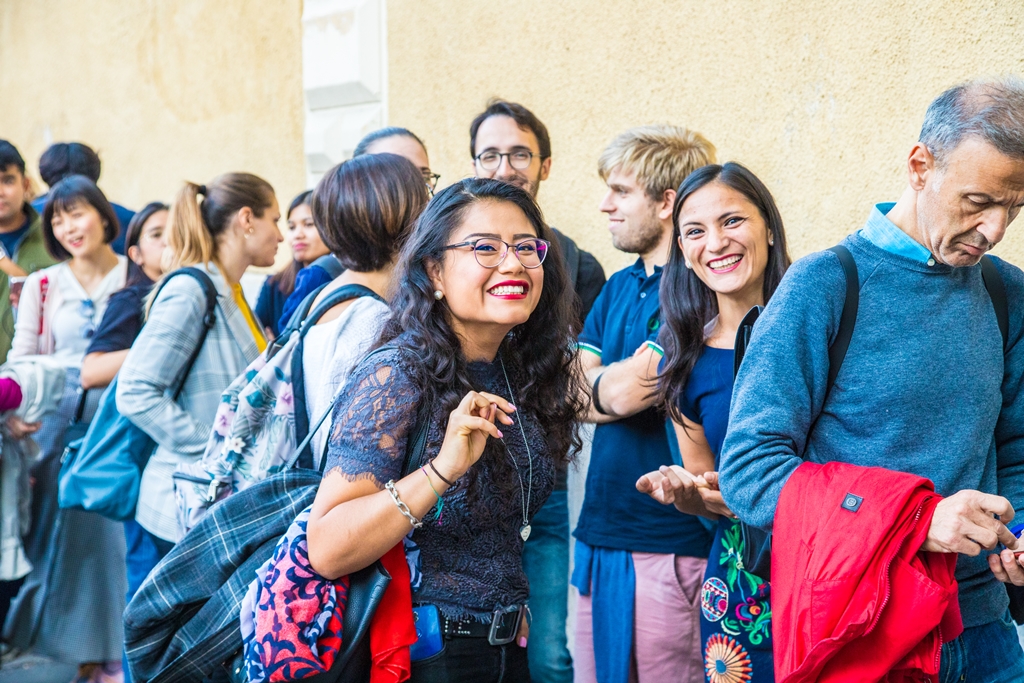
There was a large turnout of visitors for both days, with people waiting in line outside the Institute well before the scheduled start time of 5.30pm.
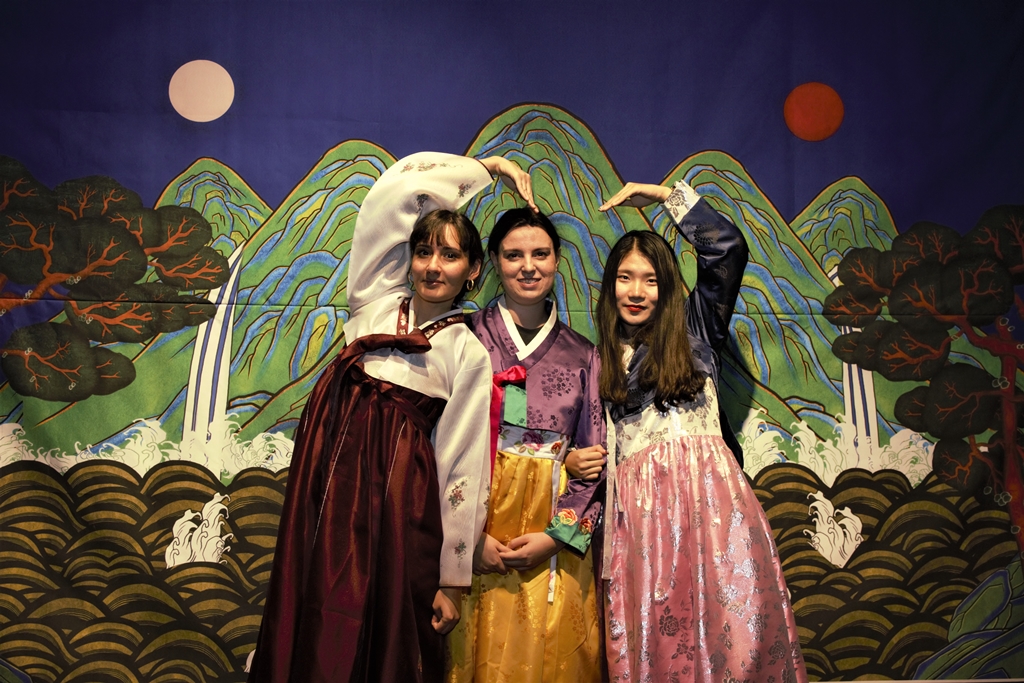
On the ground floor of the Institute, a photographic exhibition with captions on Hansik (Korean Cuisine) has been set up for the occasion. Also at the entrance Visitors were able to sign up for the Institute's newsletter to receive news about courses and events held at the Korean Cultural Institute (also receiving 2 tokens to spend during Korea Week 2019). On the ground floor it was also possible to try Hanbok (traditional Korean dress) and take souvenir photos in the Sarangbang (main room of a traditional Korean house) or in front of the Irworobongdo (the landscape with the 5 peaks, the sun and the present moon that usually stood out on the screens of kings).
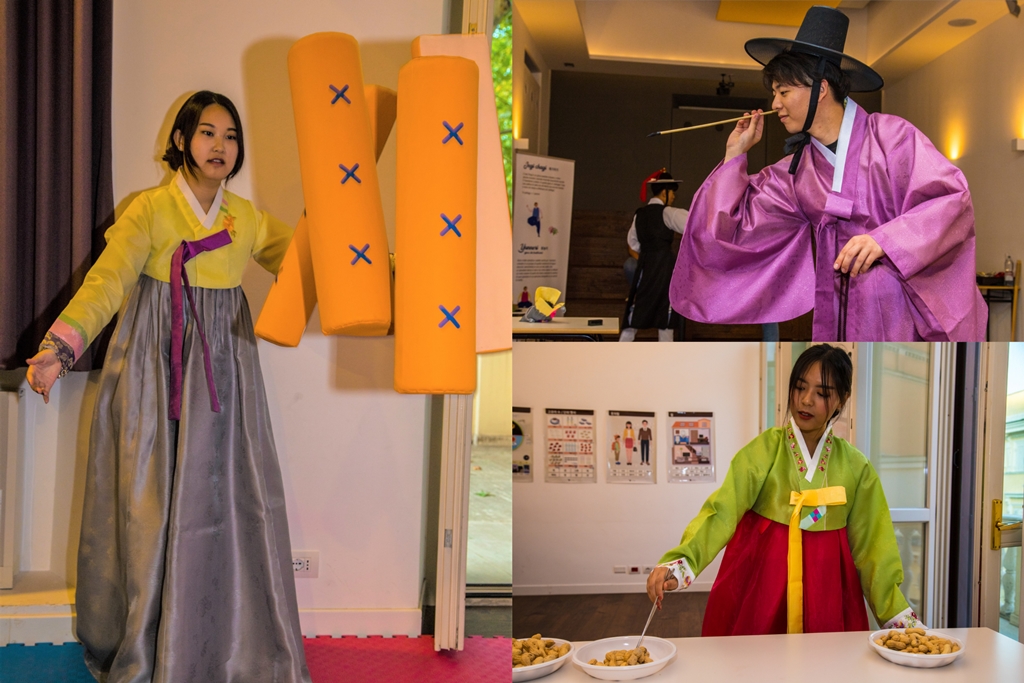
On the third floor, traditional games have been set up (through which Korea Week tokens could be won). Visitors were able to try their hand at the Jeghichagi (dribbling a sort of ball in the shape of a shuttlecock), in the Yutnori (traditional Korean board game very practiced during the great festivities consisting in advancing one's pawns by throwing sticks instead of the dice), in the Tuho (game practiced in ancient times by Korean nobles consisting in throwing arrows in a vase) and trying to break as many tiles as possible with a shot of Taekwondo (Korean martial art). In addition to the games it was possible to get sticker tattoos with words and verses of Korean poems or to have one's name written in Hangeul (the Korean language writing system) on a bookmark. And still other games like moving more peanuts with chopsticks in a short time or the Dalgona (a Korean sugar-based snack with shaped molds of which being able to remove the outer edges without ruining the mold you were winning prizes).
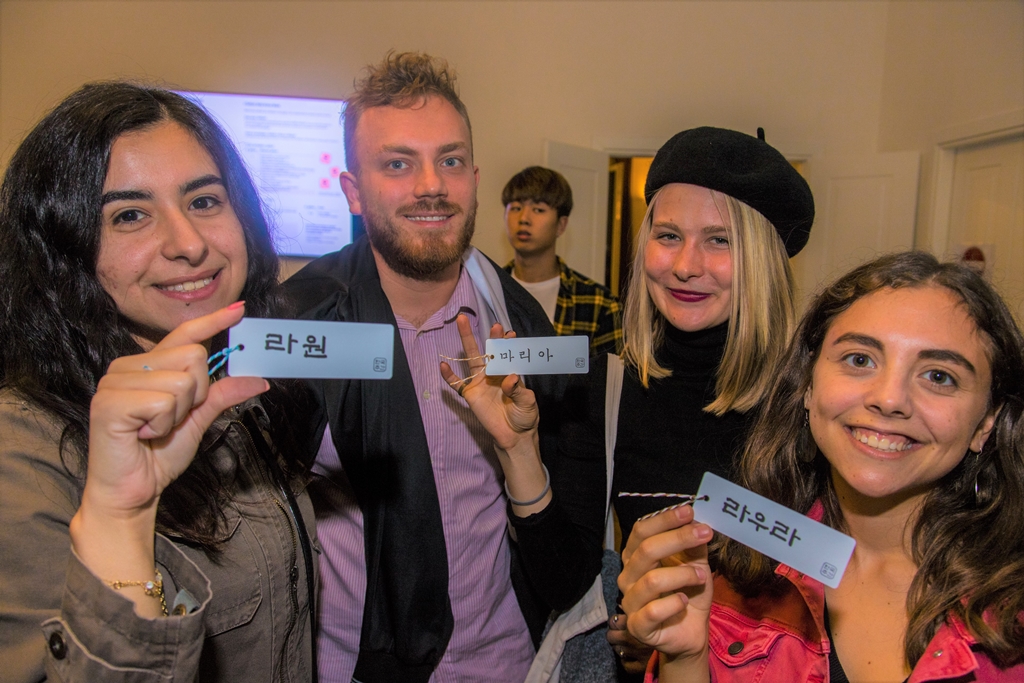
Furthermore for all the games it was possible to win extra chips or Korean gadgets for the most skilled and virtuous.

With the tokens obtained through missions and games, visitors were able to taste the various Korean Cuisine dishes prepared in the stands in the outdoor courtyard of the Korean Cultural Institute. It was possible to taste the Bulgogi (beef strips in soy sauce), the Dakgangjeong (crispy fried chicken in sweet sauce), the Samsaek Jumeokbap (Tris of rice balls), the Kimbap (roll stuffed with rice, carrot, spinach, meat and omelette), the Kimchi (spicy fermented Korean cabbage), the Degujeon (Korean cod fritters), the Hobakjeon (Korean pumpkin fritters), the Tteokgalbi (beef cutlet balls), the Sikhye (sweet fermented rice drink) and others.
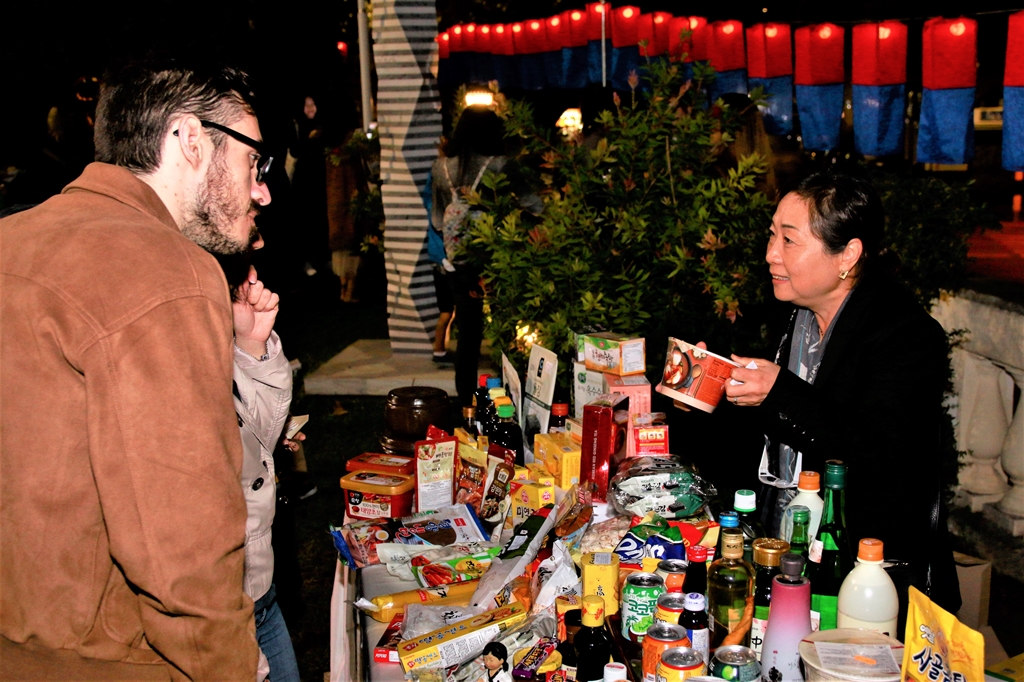
Furthermore, in all the stands there were descriptions and explanations of all the dishes served to try to introduce visitors to Hansik with taste and intellect. To give you the chance to try and get to know Hansik even outside of Korea Week, brochures were distributed with all the Korean restaurants in Rome and an illustrated booklet on Hansik.
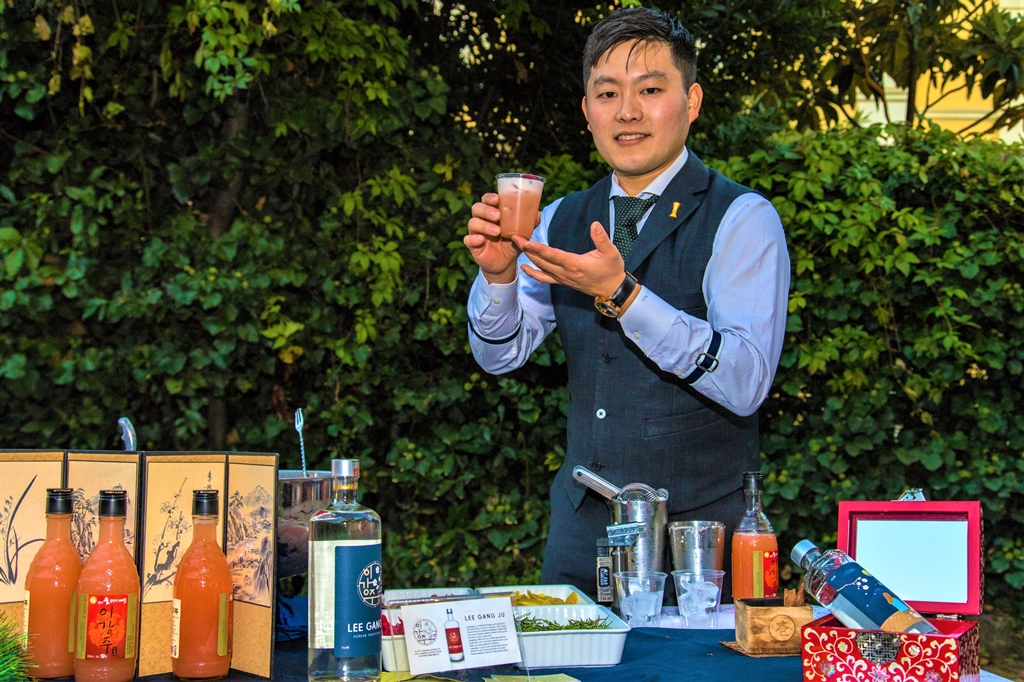
Drinks could not be missing either. The Sool Gallery, purposely brought from Korea, presented and let those present experience various types of traditional Korean spirits and spirits such as the Hansan Sogokju, the Mir, the Seonunsan Bokbunja, the Insamju, the Solsongju, the Chunbihyang etc ... Not only tradition, but also the cocktails of Taeyeol Kim, one of the most talented young Korean bartender.
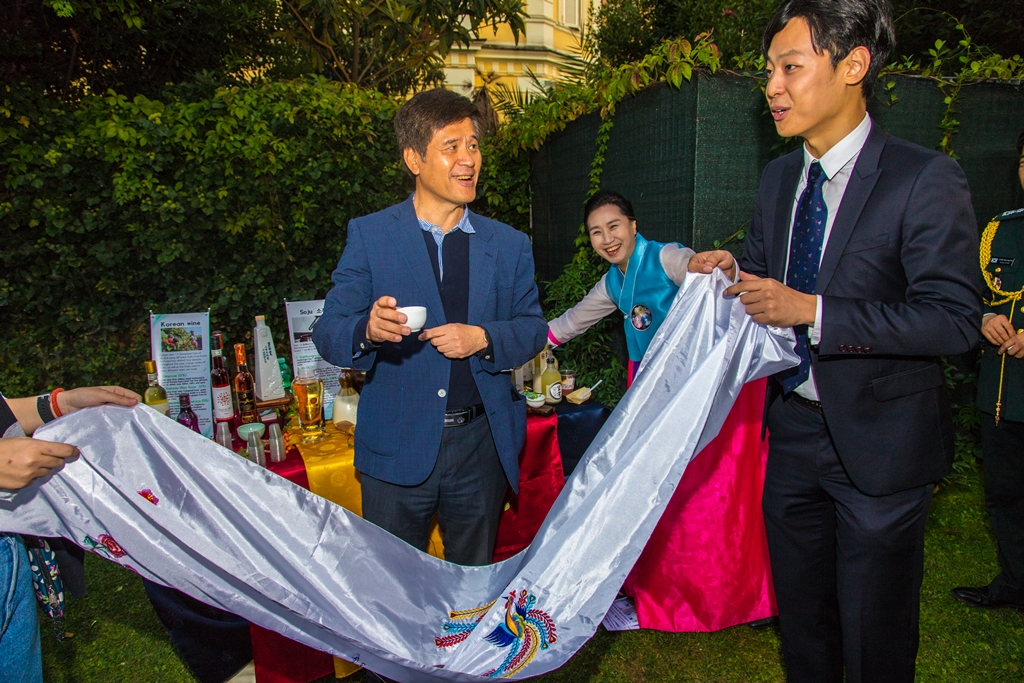
During the tasting of traditional liqueurs the couples were able to try, with the help of the Director Choong Suk Oh, the "Pyebaek" a custom practiced during traditional Korean ddings. In short the couple received with a white cloth chestnuts and dates launched by the Director who wished the couple fertility.
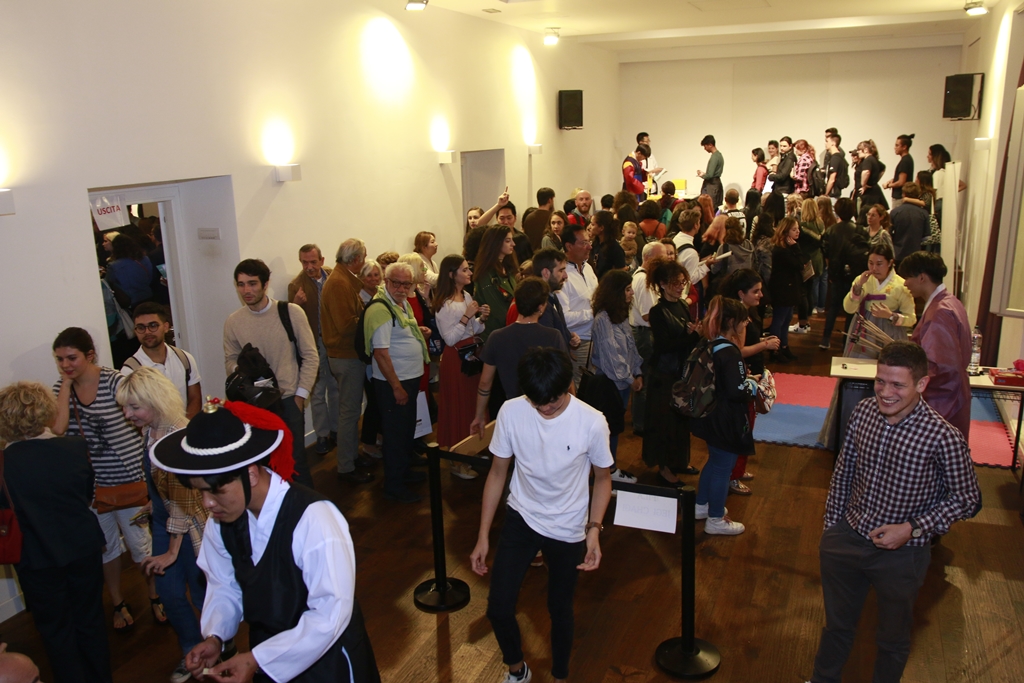
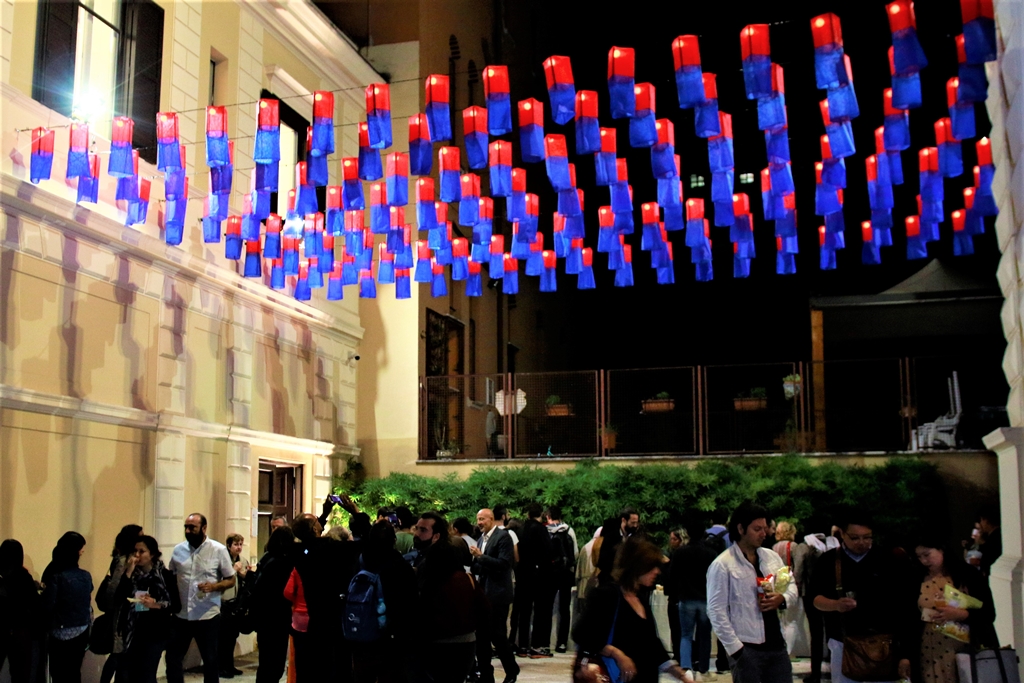
About 1500 people came to the Institute during the two days and only 900 on the day of the 4th. This is a record for an event organized within the Institute since its inauguration.
Many of the participants appreciated the new format proposed for this Korea Week which stimulated the active participation of visitors by getting tokens through the games and spending the same for the various tastes of Hansik. While a member of the Korean community in Rome who has lived in Italy for more than 50 years, he was moved and at the same time proud seeing how the Italians greatly appreciated Korean culture.